It’s been a few weeks since I retrieved my Konica III from BP-ES where it’s sticky shutter was repaired and rangefinder calibrated. I’m carrying the III with me daily, slowly working my way through a few rolls of Tri-X as I come across interesting scenes in my life.
I have only owned one other Konica product, a totally busted Autoreflex TC that I used to practice repair on. Konica, as a brand, has never appealed to me much. In my mind, they always came off as a second-tier camera manufacturer despite having a few fabled products like the 40mm Hexanon 1.8, the Hexar AF rangefinder, the original Autoreflex SLR that can switch between full and half frame 35mm and the ubiquitous but good C35 budget rangefinder. Their later association with Minolta, another, what I consider, less than glamorous camera-maker only helped to solidify my disinterest in Konica.
My viewpoint began to shift one fateful day last March. A friend and coworker dropped by my home with a backpack full of vintage cameras that he’d gathered over the years. When I saw the Konica III there on my living room table, I was immediately drawn to how handsome and small a camera it is. I was astonished by its density when I picked it up. I looked at the lens, expecting to see some slow f3.5 disappointment that is common with 1950’s German cameras, but again, the Konica III surprised me with its zippy 48mm f2! And have a look at that sizable distance between the rangefinder windows that hints at a healthy base length for accurate focusing of that fast prime lens! The final surprise, of course, was that I was holding a Konica body with excitement.
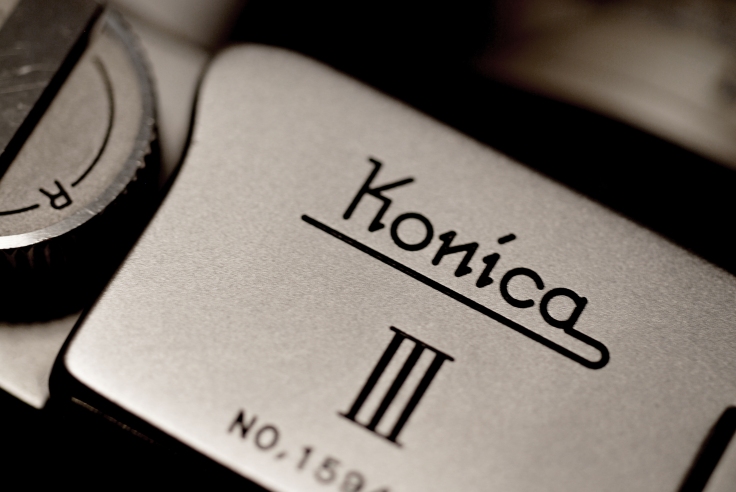
The layout and shape of the body have that no-nonsense manly austerity of a Leica M but with, dare I say, smarter, sharper lines. A brightly chromed round screw head punctuates the lens plate like a proud beauty mark. The self-timer is situated just millimeters away from the lens plate and screams “Warning! Close tolerances inside!” The classic black pebble grain leatherette on my copy is absolutely immaculate; perfectly trimmed, fitted and after over half a century is still so tightly adhered to the brass body that it looks like it could have been sprayed on like paint. The frame counter is attractive and easy to read while echoing the circle of the rewind knob. The rewind knob is thick and nicely milled with both a matte finish atop and sheen on the knurls. A beefy rewind crank extends from the knob, feeling unbreakable even under speed, driven by the greatest of excitement to reload.
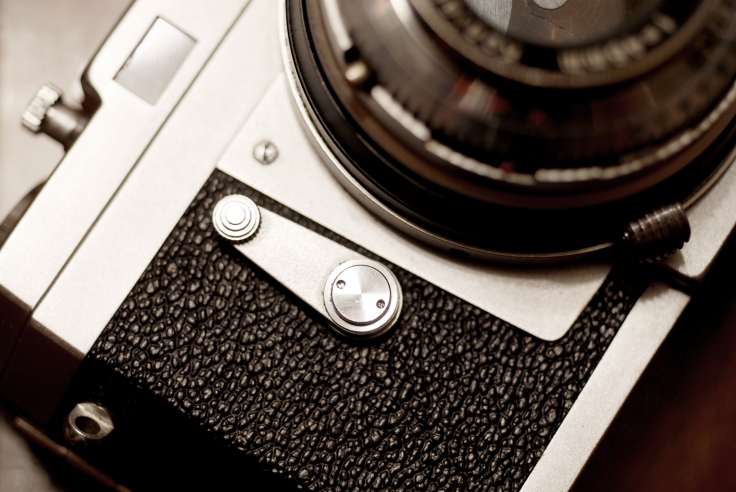
Attention to detail is just phenomenal folks. What brand camera is this thing again? What?! And it’s Japanese?!
Okay, so the film advance lever is a little Lost In Spacey and the vertical cover over the film door locking mechanism could have been sculpted into the body more elegantly, but overall, I find the Konica III to be a strikingly handsome little machine. And if you’re not smitten with the look of it, pick it up. The sheer heft of it will break your heart. Crush it in fact. Under the III’s serious weight!
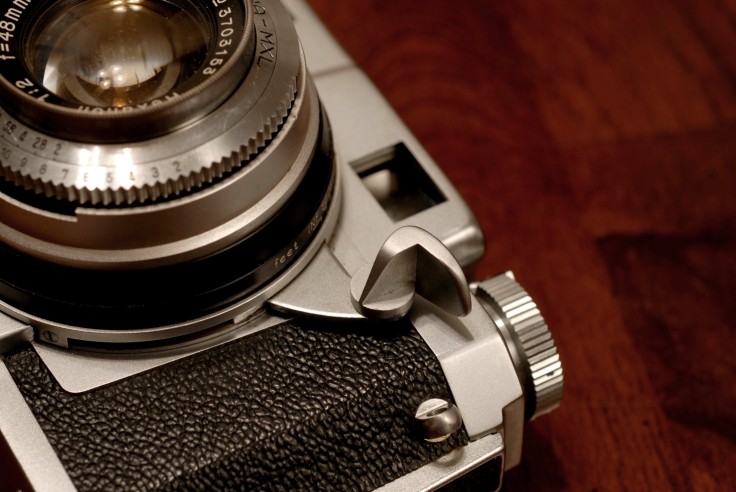
So let’s stop talking about cosmetics and talk about how it works!
A few quirks that even a seasoned classic camera shooter may miss upon picking up the camera the first time:
—The film advance is a double stroke; meaning you have to wind the advance lever twice in order to fully charge the shutter and advance the film. The only noteworthy camera I know that works this way are some of the early Leica M’s. There, a more positive association for Konica!
—The shutter release button, as it turns out, actually contains a miniature soft shutter release screwed tightly into it. All the greatest camera-makers leave their shutter releases with their threaded sockets wide open for accessories or just debris. Konica was classy enough to fill this socket on the III with a tiny, well-machined mini soft shutter release button. I was amazed the first time that I unscrewed what appeared to be a permanently fixed piece of the camera.
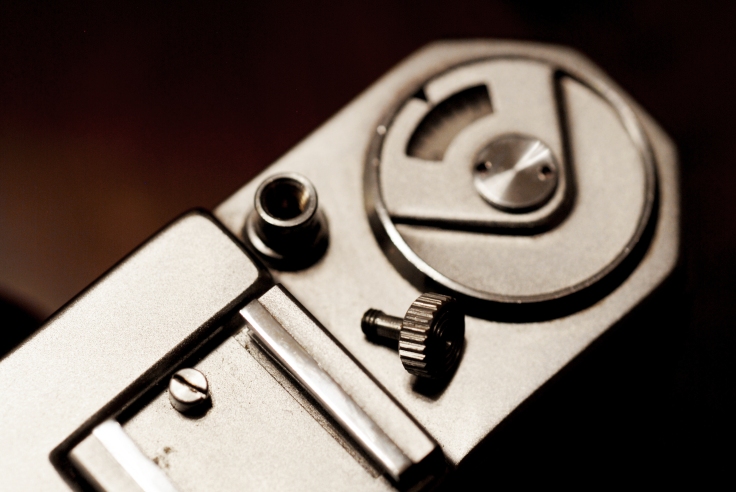
—A really clever film door release latch. Most D-ring film door releases simply pull up and rotate to unlock the film door. But Konica could not stop there. In addition to pulling the D-ring up and rotating it, you must then press the D-ring back down in order to press a release button. Pretty much every other camera I’ve handled has either a D-ring OR a release button but not both. It’s a pretty fast, secure, clever and elegant way of doing things.
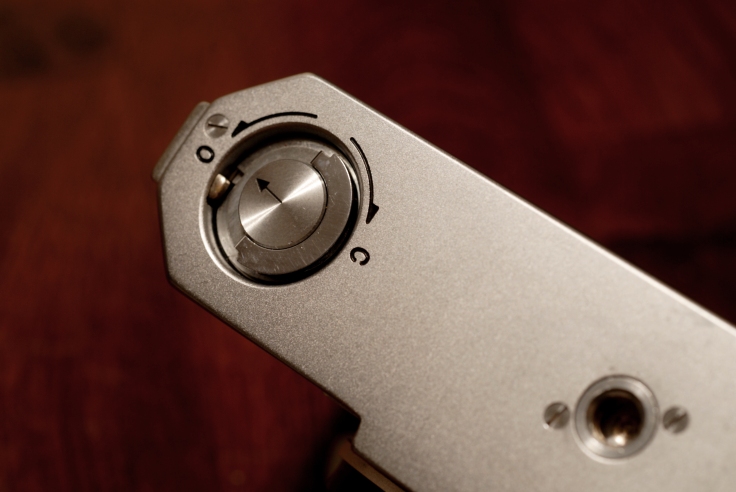
The Konica III is a 35mm fixed lens rangefinder camera sans light meter but it is equipped with an early autoexposure mechanism that uses an EV or Exposure Value system like a Hasselblad. The aperture and shutter speed rings are coupled in such a way that the aperture can always be selected independently of the shutter speed but the shutter speed, as adjusted, changes the aperture with it. It sounds complicated and annoying but is actually a nice way to bracket your depth of field. Only thing I don’t like is that I can’t adjust the aperture by feel, the camera must be tilted back toward me so I can see the bottom of the lens, then adjust it. Between this and the double stroke advance, you’re not going to win any speed contests with the III.

If you want a meter, the Voigtlander VC or VC II will slip into the III’s accessory shoe nicely but is a tad close to the shutter release button. The coupled exposure settings make the III a great Sunny 16 camera though. Why? Sunny 16 dictates that we use f16 in broad daylight. Well, newsflash, most 35mm size lenses aren’t great performers at f16 due to diffraction. So if you are burning 100 ISO and set your III to 1/100th of a second and f16, this puts you at EV 15. To reduce your DoF and squeeze some more beauty out of your lens, simply max your shutter out at 1/500th and the III automatically opens up to f5.6 like a shutter priority mode. No need to do the math. Very cool.
Now let’s talk about focus. The focus ring is completely smooth and finished in a complimentary matt black enamel with a contrasting engraved, white paint-filled hyper- focal distance scale. A sort of milled ball protrudes from the focus ring similar to smaller Leica lenses for adjusting focus. As with the rest of the camera, the control is solid and instills confidence. Focus damping on my copy has a good amount of drag to it but moves smoothly. There is a bit more drag moving towards 3 feet than towards infinity but in practice, this hasn’t bothered me and may simply be a characteristic of my particular copy.

The rangefinder focusing patch itself is a bit quirky. Rather than being an off-color rectangle in the center of the frame, the viewfinder is clear AND the patch is clear, but there is a blurry violet border around the clear RF patch. This border doesn’t move but you do see a split image within the patch. It’s reminiscent of the effect of putting a spot of tape on the front of something like an Olympus XA to increase RF contrast on an aged/cloudy RF. The violet border is a rectangle, slightly larger than the RF patch, printed on the beamsplitter. I don’t recall any other rangefinders that work this way but it works just fine. It’s accurate and not unpleasant to look through but not spectacular.
The viewfinder is large enough and not squinty but not exceptionally bright and is prone to reflections and flaring as much as any cheaper combined rangefinder/viewfinder. The violet border probably combats potential white-out issues from flaring as I haven’t come across any situations where white-out occurred. I’d say that the quality of the rangefinder in terms of brightness, enjoyment, and accuracy is about on par with something like a Minolta 7s, a Kodak Retina, Yashica Minister or a Canonet. The Konica’s RF is nicer than an Argus C3, Olympus XA or a Barnack Leica (I love them but you know what I mean!). It’s not quite up to an Olympus 35, Voigtlander Bessa or of course a Leica M.
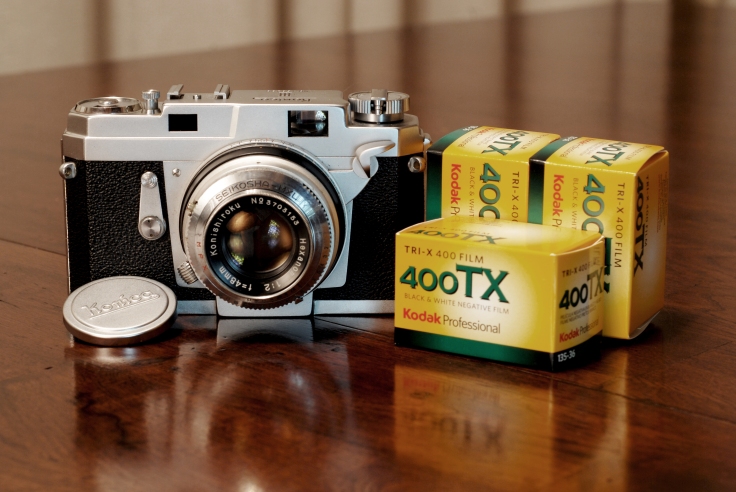
So here are some shots from my first roll. Note that the 48mm f2 Hexanon lens is as sharp as the one would expect of any popular 50/2. That slightly wider angle adds a little more perspective that I really like. Not as dramatic, of course as a 45 or 35mm but just a HINT of barrel distortion at close distances which worked really nicely in this automotive shot. By the way, there’s no parallax correction but as you can see, the lens and finder are situated such that at about 4 feet away, I had no problem perfectly centering this old Pontiac.
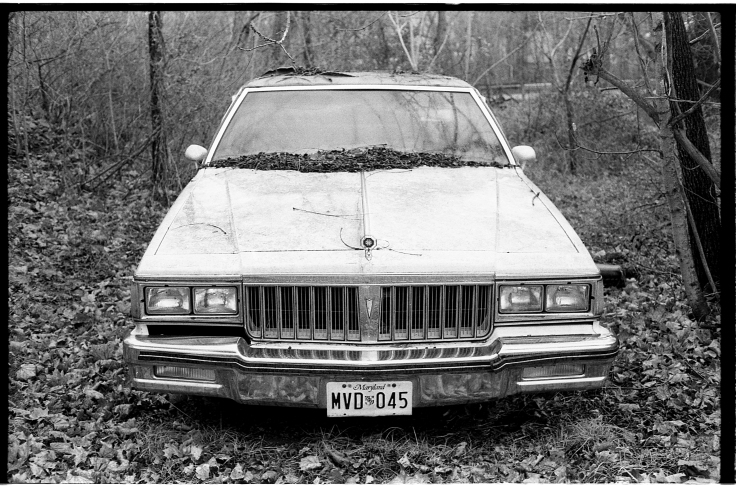
The Hexanon 48/2 appears to be single coated, as was the norm in the 50’s. It’s contrasty enough in bright sun but in this example of a low but contrasty lighting situation at full aperture, we can see some of that dreamy character that is also common of single coated optics.
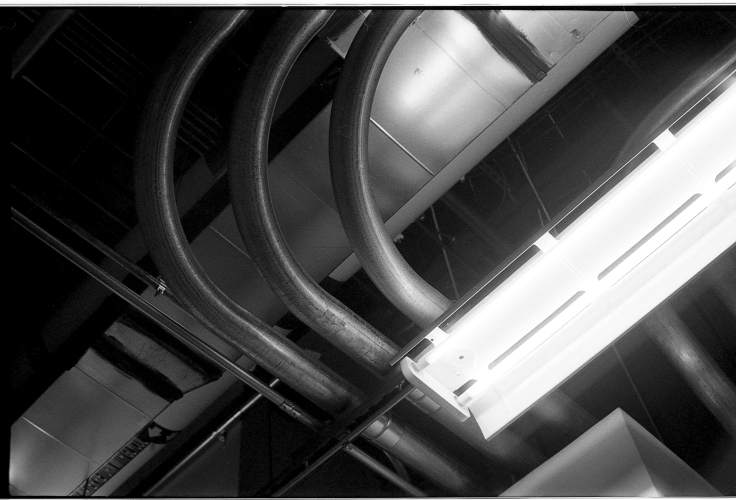
Shooting stopped down in bright sun with Tri-X of course yields rich contrast and high resolution.
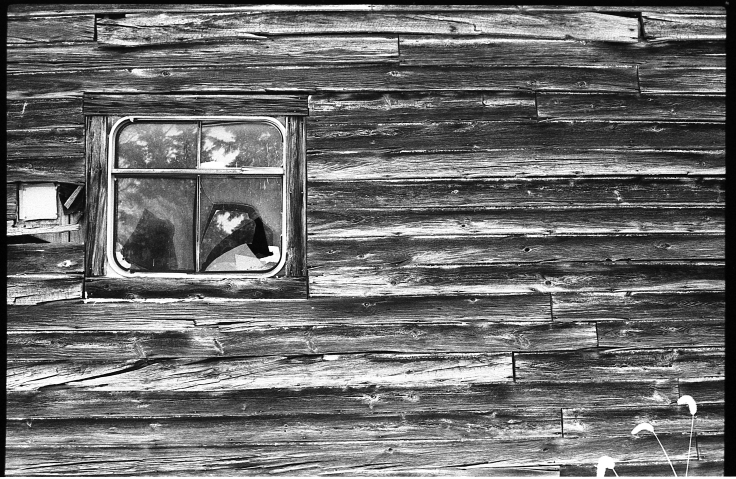

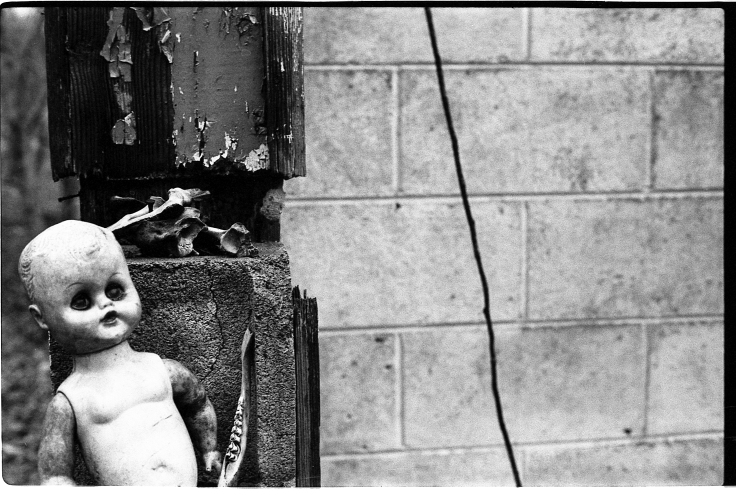
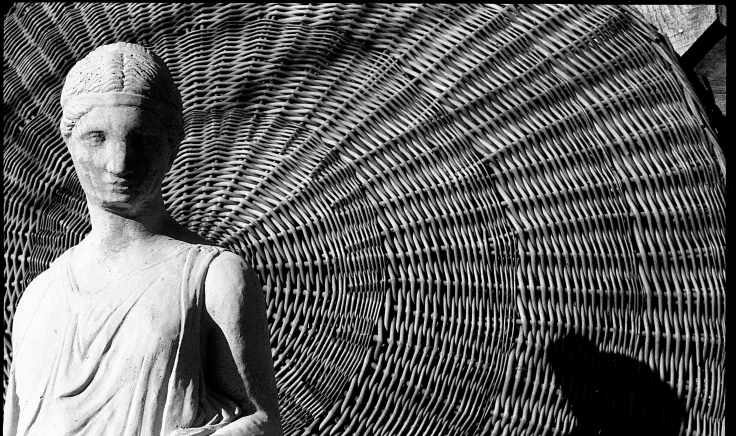
I underexposed this shot a bit so it came out with more tonality
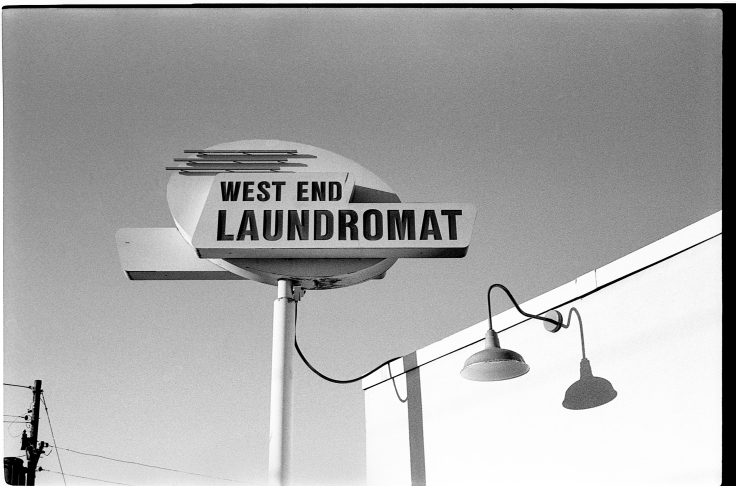
And this was from a more overcast day. Plenty of detail here at a middle focusing distance and middle aperture.
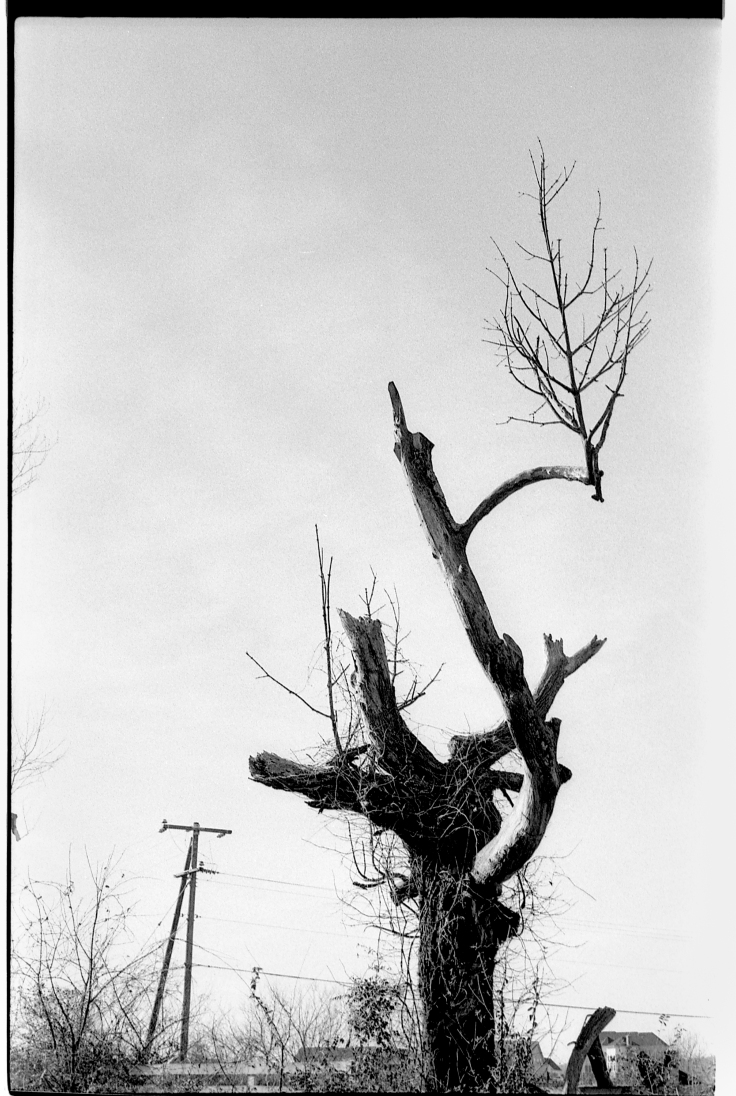
Good stuff! Time to load another roll!
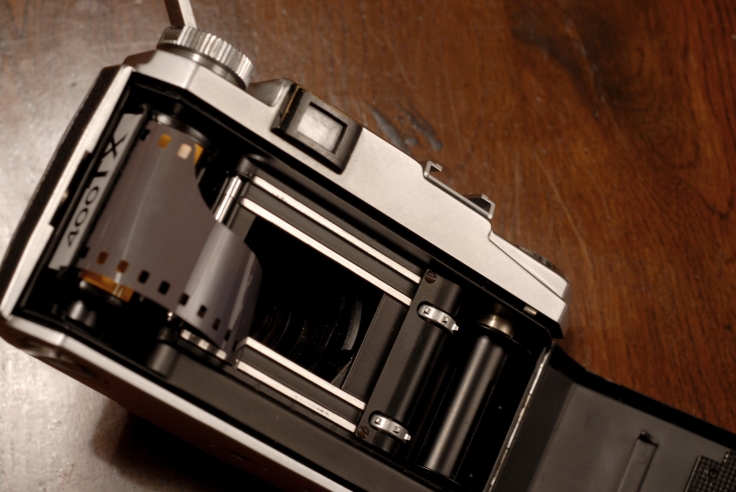
Thanks for reading and happy shooting!
Follow, Favorite, Like, Add, Insult, Contact Johnny Martyr








wooooooow. What a fabulous review. And what stunning images! You hit a triple home run: finding this camera, taking those great photos, and writing this solid review. Well done!
LikeLike
Hey thanks Jim, that means a lot! Thanks for reading!
LikeLike
Hey Johnny. Remember me from MySpace days in the vintage camera group you used the run. That’s nearing 20 years ago.
Glad to see youre still going and i’m always running accross your site.
I so need one of these Konicas, will try make it my next squeeze. Strickly because i want to shoot near 50mm alongside my main lens and i don’t want to carry an Slr or swap lenses.
great article, all the best
Kayne
LikeLiked by 1 person
So great to hear from you! Classic Cameras is on Facebook now and we were just talking about the Myspace days (https://www.facebook.com/groups/ClassicCameras/)
The Konica III is one of, if not the most well-constructed fixed lens 35mm rangefinders that I’ve ever used, I think you’ll enjoy it. Let me know!
LikeLike
“Excellent catch” John, you see what I did there….lol. Great little camera, great review, and superb testing of it’s capabilities. Bravo!
LikeLike
Haha, thanks David! Do you own/use a Konica rangefinder?
LikeLike
Hey, awesome review. I’m just thinking about buying this great piece of work. I’m already a Konica user – Hexar AF which is currently in the service – hope its not dead. Just a questing, its all mechanical, right? no battery… take care and regards from Prague!
LikeLike
Thanks so much! Yes, the III was built at a time when most cameras did not use batteries or have built-in electronics. Thus, unlike your AF, it is virtually servicable forever! If you’d like a meter for it, I believe the Voigtlander VC II will fit it or you can use a smart phone app which works fine with print film in my experience. Good luck with your Hexar and scoring an earlier, all mechanical Konica!
LikeLike
I’m an old film guy (and I do mean old). I went over to the dark side (digital) a little later than everyone else, and did than for a while, but for the last year I’ve been buying 50s and 60s rangefinders. Canon P, Canon VI-L, LTM lenses, Petris, and about a month ago, a Konica III!
Wow.
It really is an amazingly solid piece of equipment. All of your comments are right on.
Mine is in pretty decent shape; everything works, except that if the flash sync isn’t on “X”, the shutter won’t go faster than 1/60. Weird.
I’ve put 3 rolls of Tri-X through it. The lens is terrific, but I’m afraid my shutter needs cleaned and lubed. And the viewfinder’s pretty foggy.
Getting service on these mechanical cameras is hit-or-miss. The real old master repair guys are retiring. I’ve had a couple of big, modern repair places assure me that they could handle cleaning an LTM lens or a Petri rangefinder and then sort of make a mess of it.
So, How did BP-ES do? If you had another Konica III would you send it to them?
Thanks
LikeLike
Scott, thanks for commenting and glad to hear you’re back on film!
Sounds like you’ve got some great cameras! Don’t forget to shoot and really learn each one before buying more. It’s all about the photos and keeping the film alive, right?!
I have been using BPES for as long as I’ve been shooting (17 years) and yes, I would always recommend them (it’s really only a “him”).
I hope you get your III together, it’s such a great daily use camera. If you have a site if your work, I’d love to see what you’re up to.
Thanks again for writing
LikeLike
Great review! I bought one of these fabulous cameras two or three years ago. I’d always wanted a ‘old-fashioned’ rangefinder. I found mine online at a great camera dealer in Scotland I use regularly – the decision to buy it was out of my hands as soon as I saw it. Its in perfect nick – like it just came out of the factory; I think it was only ever lightly used. Its my favourite camera – quirky, brilliantly designed and beautifully built. The lens is terrific. All the best!
LikeLike
Thanks for your comment Chris! It’s great to hear of someone else enjoying the Konica III. If you have a link to any photos you’ve taken with it, I’d loved to see.
LikeLike
Pleasure, Johnny… I need to scan some of the negatives and put them on my website (www.christhomasphotographer.co.uk). Your kind interest means that I will do this asap…thank you. I had a look at my Konica again after reading your review. Mine must be an earlier version because it doesn’t have the EV ring and aperture/shutter speed coupling. So mine’s totally manual, but I can see the aperture and speed markings on top of the lens. The serial number on mine starts 109…, yours 158?…something, so I guess an updated model. By the way, I liked your photographs taken with the Konica, especially the shots of the wood panels. I use Ilford FP4+ myself.
LikeLike
Beautiful work on your site Chris! Yeah, let me know when some Konica III shots up! That’s interesting about your exposure control. I know there were a number of these Konica RF models but I not super fluent on them. Maybe there was a step between the Model III and the IIIA? I’d be interested in a photo of your controls. And yes, my SN starts with 158.
LikeLike
Hey – thanks so much! Its great to get such positive feedback, so much appreciated. I only launched my site recently, so it doesn’t get many hits.
As for the Konica, I can send a couple of photos of the lens controls, etc. Best by email?? I’ll also scan some negatives of pictures from the Konica tomorrow and put them up.
LikeLike
Sounds great! JohnnyMartyr@Hotmail.com | http://www.JohnnyMartyr.com
LikeLike
My Konica III is off to BP-ES.
You might find this interesting:
http://www.dantestella.com/technical/koni3.html
It describes the three basic models and how to get around the very annoying EV interlock system on those models that have it.
LikeLike
I don’t find the EV interlock annoying at all. There are a number of great cameras, like, uh Hasselblad, that have this feature. I understand it’s not for everyone, or every camera but I find it useful on a snapshoot type of camera like this. Thanks for the link and please let me know how your III comes back from BPES!
LikeLike
Good job on this article! I have a collection of Old Konica rangefinders from the original 1’s to the lllM, and including a lll just like yours. It too is in beautiful condition, but the film advance lever unfortunately doesn’t cock the shutter.
LikeLike
Thanks so much! The IIIM looks like an amazing camera too! Gotta get the advance mechanism back in action! I bet in 10 years or less it’s going to be next to impossible to get these cameras professionally repaired. Gotta do it now!
LikeLike
Yeah, that’s my concern. I have a bunch of nice film cameras that need cleaned and lubed, and even though they work OK now I feel pressure to get them all done before all the repair folks retire.
LikeLike
Yelp, me too! Slowly working through my favorites/most used!
LikeLike
Easy to pack them up and ship them off. Hard to pay for them if they’re all finished at once.
Having them CLA’d is often more expensive than buying them.
I’m pacing myself now, sending off one per month and not sending the next until the first is finished and paid for.
LikeLike
Agreed, and I have only a few cameras/lenses that are completely useless so I sometimes hate to be without them for a period of time. Then after you get things back, they need to be put through their paces. So in total, the process of getting numerous bits of gear CLA’d can be very time consuming too!
LikeLike
Hi Johnny, great write up, great enthusiasm. It’s contagious 🙂
As you like the Konica III so much, I suspect you would like the IIIa even more. Same solid quality and attention to detail. It has parallax and viewing angle correction, and a super bright 1:1 rangefinder – you can shoot with both eyes open. It came with a 48/2 lens (the one you have on your Konica III – a legendary lens in fact) and a 50/1.8 one. More here: https://sites.google.com/site/tks0en/7-other-konica-cameras/-konica-iiia-1959
LikeLike
JJ, after I impulse bought my III, I read up on the other models and yes, the IIIa looks even better. If I’d been seeking one of these fine Konica RF’s out, I probably would have chosen the IIIa with the faster lens. But sometimes a camera just finds you and works, that’s the III for me. Thanks for your comments!
LikeLike
Johnny, I picked up a Konica IIIA at a second hand store ‘auction’ and I fell in lust with it immediately. I have bid on it. I did some research and found that the shutter does not work..bummer. With all the hype about this range finder I’m still going after it. Will need a person to clean and repair it-any ideas? I’m in Canada.
LikeLike
Randy, it’s always fun to hear about someone being inspired by a vintage camera! I never recommend buying cameras from anywhere but proper, reputable camera dealers. However some cams like the Konica don’t make the retail scene as often as something like a K1000 so we have to resort to more dicey avenues. I’m in The States and don’t have recommendations for repair in Canada. However, any decent repair shop can handle this camera. It’s not like a Leica or Widelux, it’s interior is pretty conventional. It probably just needs a basic CLA. I’m sorry I cannot offer something more concrete but thanks for reading and please keep me updated with your progress!
LikeLike
Great article, Johnny. I really appreciate hands-on reviews like this. My question is which aperture do you find the sharpest on the 48mm f/2? I have a IIIA (48mm) but haven’t had the time yet to really sit down and take some shots at a target in order to compare the sharpness of each. Would like to hear what your experience is on this. Thanks.
LikeLike
Thanks Peter, “hands-on” is a great adjective for what I aim for.
Well, as you know, sharpness is a bourgeois concept! And it’s a bit of a moving target as subject to lens distance, contrast, flare etc all affect apparent sharpness. But generally speaking, I think this 48 behaves as most normal lenses with strongest performance stopped down a little and into the middle apertures. 2.8/3.5 – 8 is the zone. I believe that I have had my favorite results at around f4. F2 really isn’t bad though!
I am so used to f1.5 and faster normal lenses that I am often surprised to remember how sharp an f2 normal can be at full aperture. The slightly greater DoF with the 48 over a 50 probably aids that goal.
Hope that helps and feel free to let me know your thoughts once you get some more shooting in with your Konica!
LikeLike